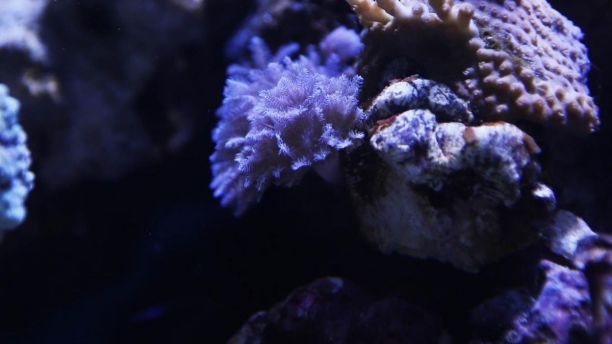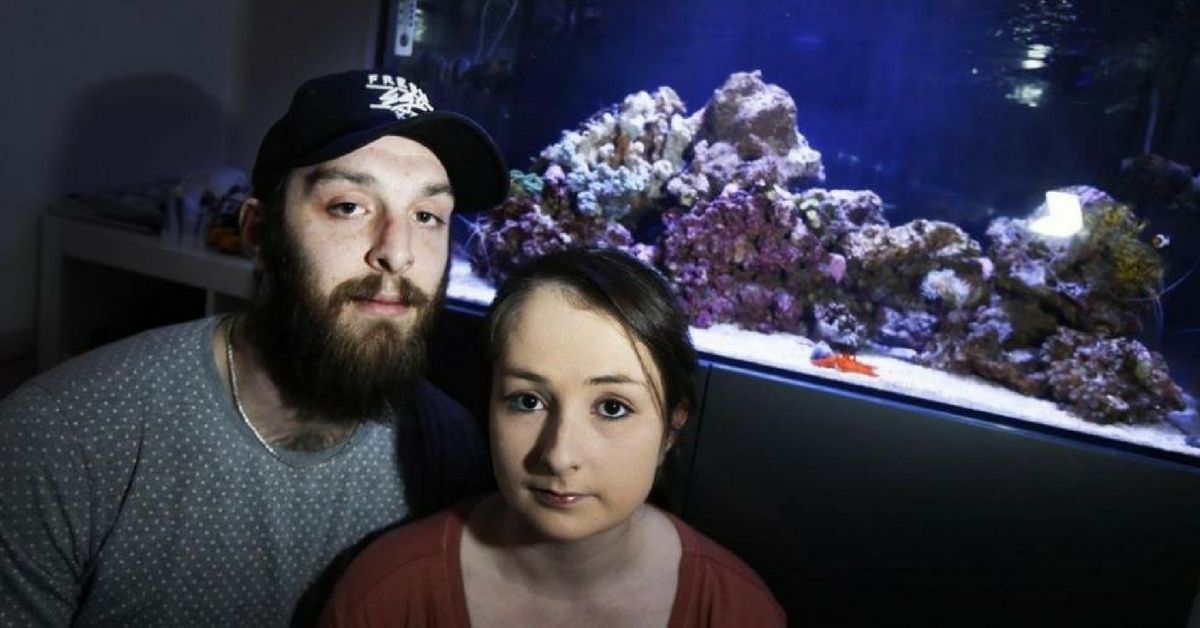Fish tanks are everywhere; In people's homes, offices, and even in restaurants.
We have a lot of allergies in our home, so my parents did not allow us to keep furry pets while growing up, instead we always had a tank full of beautiful, tropical fish, corals and aquatic plants.
Aquariums are not only appealing to the eyes, but a fish is easier to take care of than other animals like a dog or cat.
Like any other aquarium owner, we just made sure to remember to feed the fish, clean the tank at least once every two weeks, and check that the filter is working properly.
There's nothing dangerous about that, right? Wrong!

It's rare, but there have been times when cleaning out a fish tank had some terrible, life-threatening consequences. Just ask Chris Matthews and his family.
The 27-year-old was convinced that his family caught a nasty flu bug when they all began experiencing symptoms like coughing and nausea.
However, when they started having eye problems, and the two dogs also got sick, Matthews knew it was something more serious.
"We couldn't regulate our temperature, we were struggling to breathe and coughing," he told SWNS on Thursday. "We woke up the next morning feeling groggy but initially put it down to flu."
It wasn't until he started to look into what could be causing their symptoms that he realized the fish tank may be to blame.
A near fatal mistake
A day before the family noticed any symptoms, Matthew had cleaned out the aquarium in the house.
SWNS reported that in the process of transferring rocks, corals, and other items into another container to clean them individually, Matthews scratched a coral, and unbeknownst to him, he released palytoxin in the air.
Known as the "second deadliest" poison in the world, palytoxin can harm a person "via dermal, inhalation, and oral routes of exposure," according to the Centers for Disease Control and Prevention (CDC).
Since Matthews did not open any windows to air out the room, he and the other five people in the house inhaled the toxic fumes overnight.

Thanks to his quick thinking, he was able to figure out what was making everyone sick, and contacted the local authorities right away.
An emergency response team, including police, firefighters, and ambulances were able to safely remove the poisonous coral from the home with the directions from Public Health England.
The CDC claims that palytoxin is more dangerous when ingested, but in some cases inhaling the fumes could lead to "irreversible blindness."
"What if there had been a young child or someone elderly in the house?"
The family was immediately rushed to a hospital, and luckily, doctors were able to successfully treat them.
"I knew about palytoxin, which can kill you if ingested, and that coral can cause things like rashes if you don't handle it carefully but I had no idea taking the pulsing xenia (coral) out of the water could make the toxin airborne," Matthew said.

Matthews and his family are thankful that they're still alive, but the experience has left them wondering what would've happened if they didn't get help right away.
"Certainly our dogs would have been in a very bad way according to the vet," he said. "That is what is so worrying, what if there had been a young child or someone elderly in the house?"
Now, Matthews is using what they've learned to educate other pet owners.
How can you protect yourself?
Matthews, who has owned a fish tank for more than a decade, is advising other tank owners to really do some research and ask questions before buying corals.
"The information is not readily available online in a way people can easily understand and more needs to be done when people are buying these corals. I want to use this experience to educate people about the risks and the measures people need to take."<He added, "I've seen the coral described as 'exotic' but it is actually one of the most common around."
The pest coral you should keep your eyes peeled for is called pulsing xenia. According to Matthews, this beautiful coral grows in "areas where you can't get anything else to thrive" because it can tolerate a wide range of temperatures.
It's also affordable and easy to care for, which means a lot of tank owners have it.

However, you should be very careful when handling it because when it's stressed it can produce harmful toxins like palytoxin.
If you have pulsing xenia in your aquarium, make sure the area is well ventilated before you start cleaning the tank.
Another good practice is to get into the habit of wearing waterproof gloves. In addition to toxins, a study by the Henry Ford Hospital in Detroit found that there are harmful bacteria like Mycobacterium marinum lurking in fish tanks.
If you happen to come into contact with these pathogens, you could become seriously ill.

Also, remember to always wash your hands and forearms with anti-bacterial soap after you're done working in the aquarium.
As for Matthews and his family, this close call isn't enough to deter them from continuing their tradition of keeping tropical fish, but they now have safety measures in place to prevent something like this from ever happening to them again.
"We've put more safety precautions in place, making sure we properly ventilate the room, but I love having fish and it's something that both sides of my family have always done."I'll be a lot more cautious in the future though."
Do you have an aquarium at home? Does it contain pulsing xenia?

